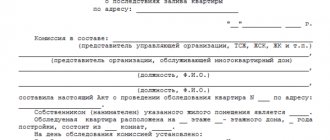ST 281 of the Criminal Code of the Russian Federation.
1. Committing an explosion, arson or other actions aimed at destroying or damaging enterprises, structures, transport infrastructure and vehicles, communications, life support facilities for the population in order to undermine the economic security and defense capability of the Russian Federation - is punishable by imprisonment for a term of at least ten up to fifteen years.
2. The same acts: a) committed by an organized group; b) entailing the infliction of significant property damage or the onset of other grave consequences - are punishable by imprisonment for a term of twelve to twenty years.
3. Acts provided for in parts one or two of this article, if they entailed the intentional infliction of death on a person, are punishable by imprisonment for a term of fifteen to twenty years or life imprisonment.
Commentary to Art. 281 Criminal Code
1. The subject of the crime is enterprises (industrial complexes), structures (bridges, dams, etc.), objects of transport infrastructure and vehicles, communications, life support facilities for the population (reservoirs, power lines, etc.). These objects may be in different forms of ownership. On the concept of transport infrastructure facilities and vehicles, see comments to Art. 263 - 264 CC.
2. The objective side of the crime is expressed in the form of actions: a) explosion; b) arson; c) other actions aimed at destroying or damaging the specified objects. Other actions mean flooding, wrecking, disabling, etc. Destruction is bringing an object completely into disrepair. Damage - bringing an object into a partially unusable condition with the possibility of its restoration and (or) repair. Certain qualified types of sabotage require the occurrence of consequences in the form of significant property damage or the occurrence of other grave consequences (clause “b”, part 2) or the death of a person (part 3).
3. The crime (Part 1) is considered completed from the moment the specified actions are committed, regardless of the consequences. Certain types of qualified sabotage, requiring the onset of consequences, are material compositions.
4. The subjective side is characterized by direct intent and special goals to undermine economic security and defense capability. Causing death to a person (under Part 3) must also be covered by the intent of the person.
5. The concept of significant damage and grave consequences (clause “b”, part 2) is an evaluative concept. The act provided for in Part 3 of Art. 281 of the Criminal Code, additional qualifications under Art. 105 of the Criminal Code does not require it.
Types of sabotage
This offense occurs:
- Economic.
- Informational.
- Psychological.
- Political.
- Electronic (cyber sabotage).
Let us consider the aspects of each type of sabotage separately.
Economic
Economic sabotage is carried out to gain control over economic capacities or mineral deposits in a specific region of the country.
This type of sabotage is characterized by a hidden nature. Economic sabotage is aimed at specific organizations, industries and responsible persons. Since the goal of saboteurs is to take possession of an economic object, this type of sabotage rarely includes explosions and other actions related to the destruction of such objects.
Ideological sabotage
This type of sabotage involves global work with the goal of influencing all spheres of society.
Saboteurs are trying to change the political course of the country, the direction of its economy, the legal system and even the moral attitudes of the population.
Ideological sabotage is capable of forming a stable public opinion on important issues and creating attitudes that determine the development of society in the future. That is why this type of sabotage is considered one of the most dangerous and has long-term consequences.
Cyber sabotage
With the widespread use of the Internet and computer technology, attacks on the databases of various government departments have become commonplace. An equally important goal of cyber saboteurs is propaganda on the Internet.
In practice, cyber sabotage is expressed in:
Have a question for a lawyer? Ask now, call and get a free consultation from leading lawyers in your city. We will answer your questions quickly and try to help with your specific case.
Telephone in Moscow and the Moscow region: +7
Phone in St. Petersburg and Leningrad region: +7
Free hotline throughout Russia: 8 (800) 301-39-20
- Infecting computers with viruses.
- Unauthorized access to organizational databases for their theft, modification or destruction.
- Spam attacks on an organization's email.
- Artificially created overload and server collapse.
Propaganda on the Internet in the modern world has reached unprecedented proportions. For this purpose, numerous interconnected websites are created. In this case, connections are masked in order to pass off each site as a personal independent project. These sites publish both scientific data and false information, which in general looks quite plausible. As a result of such work, people cannot distinguish truth from fiction, which is beneficial for saboteurs who can shape the way people think they need.
Second commentary to Art. 281 of the Criminal Code of the Russian Federation
1. The main direct object of the crime is the defense capability of the state and economic security, i.e. state security in the economic sphere.
2. The objective side of sabotage is characterized by active actions specified in the commented article of the Criminal Code.
The crime is considered completed from the moment the actions described in the disposition are committed, even if the perpetrator failed to destroy or damage the objects listed in the disposition.
3. The subjective side of sabotage is characterized by direct intent. At the same time, the culprit pursues the goal of undermining the economic security and defense capability of the state.
4. The subject of sabotage is a person who has reached the age of 16 years.
5. Part 2 art. 281 of the Criminal Code provides for liability for sabotage under aggravating circumstances - committed by an organized group, causing significant property damage or causing other grave consequences.
6. Part 3 art. 281 of the Criminal Code provides for the intentional causing of death to a person.
What is sabotage?
Sabotage is considered a serious crime. The term itself means “distraction,” which is the goal of the saboteurs. During hostilities, enemy soldiers carry out sabotage to divert his attention from any actions of their army.
Another important goal of sabotage is to weaken the economy of the enemy state. In practice, this goal is expressed in the following tasks:
- Destroy infrastructure facilities.
- Cause harm to the defense capability of the state.
- Upset the balance of the country's economy.
All these objectives are achieved in a complex manner and are interconnected with other global goals of the enemy.
In the process of sabotage, civilians often also suffer, because the destruction of infrastructure often leads to casualties.
Sabotage is always carried out secretly by specialists who penetrate behind enemy lines. In their country they are considered the best soldiers, representatives of elite units.
From “sabotage” to “sharashkas”
Professors and engineers were most often convicted under “sabotage” charges. In 1931, the board of the OGPU, under Articles 58.7 and 58.11 of the Criminal Code (organization of sabotage), sentenced 50-year-old professor of the Agricultural Institute Mikhail Arkhangelsky to five years in the camps; imprisonment was then replaced by deportation to Siberia.
In 1933, under the same articles, a 50-year-old breeder of the Zonal Experimental Station of Grain Farming, Professor Viktor Berg from Omsk, was sentenced to death. In 1930, the engineer of the People's Commissariat of Railways, Evgeniy Blinyak, received a year and four months of camps under Article 58.7 of the Criminal Code. Two years later, Mikhail Krylov, a professor at the Kazan State Veterinary Institute, was exiled to Kazakhstan, convicted under Articles 58.7 and 58.11 of the Criminal Code. All of them were later rehabilitated.
In 1989, the Rehabilitation Commission headed by Alexander Yakovlev found that in 1929-30 alone, more than 600 scientists and engineers were convicted as “pests” in the USSR. Like, the fight against “sabotage” primarily concerned highly qualified specialists - therefore it became the main source of personnel for the “sharashkas”, where the convicts continued to work in their specialty.
Types of subversive actions
Based on the type of objects destroyed, the following are distinguished:
- Sabotage in production.
- On buildings for commercial purposes.
- On transport and transport routes.
- At other structures necessary for the normal functioning of citizens.
Depending on the method of implementation, sabotage can be expressed in:
- Arson.
- Explosion.
- Organization of an accident.
- Flooding.
- Sabotage.
The most dangerous actions of saboteurs are:
- Use of explosives, biological, chemical and radioactive weapons.
- Use of official position.
- Disclosure of state secrets.
- Theft of secret information.
- Using the media and boarding school to involve in sabotage activities.
- Use of various organizations and associations.
- Incitement to racial, religious and other clashes.
- Financing sabotage.
- Propaganda and agitation among civilians.
These lists are, of course, not exhaustive. Saboteurs constantly use new ways to commit sabotage and involve other people in this activity.
Difference from terrorism
Sabotage in practice is associated with:
- Destruction of property.
- Purposeful breakdown of transport routes and means.
- Destruction of forests.
However, all of these types of crimes cause harm to specific objects, but are not intended to undermine the economic and political security of the country.
Terrorism, although superficially similar to sabotage, pursues other goals. Terrorist acts are committed to intimidate people, blackmail government officials in order to force them to make concessions to terrorists.
In the case of sabotage, the death of people occurs by accident; usually the saboteurs do not set this as their goal. For terrorists, this is the main goal.
“Pests” in court: the Shakhty case and other trials
The first high-profile case of the “saboteurs” was the Shakhtinsky trial. On March 10, 1928, the newspaper Pravda published a message from the prosecutor of the Supreme Court of the USSR: “In the North Caucasus, in the Shakhty region of Donbass, the OGPU authorities, with the full assistance of the workers, have uncovered a counter-revolutionary organization that has set itself the goal of disorganizing and destroying the coal industry of this region. A thorough analysis of numerous disorganizing industrial phenomena (fires, explosions, damage to cars, blockages of mines) led to the discovery of counter-revolutionary criminals.”
It was alleged that the “leadership center” of the group consisted of former owners and shareholders of Donbass coal enterprises, located abroad and associated with agents of “German industrial firms and Polish counterintelligence.”
The underground organization allegedly consisted of engineers, technicians and employees, “many of them were previously agents of white counterintelligence.” Investigators insisted that the “unnecessary expenditure of capital,” declining product quality, and mine flooding and explosions were the result of sabotage. “Unnecessary equipment was purchased abroad, sometimes outdated machines, sometimes, on the contrary, the newest ones, the use of which by the factories was impossible due to the technical conditions of the southern coal region,” the prosecutor noted. The main goal of the conspirators was to “disrupt the entire industry” and deteriorate the defense capability of the USSR.
The defendants in the case were charged under Articles 58.7 and 58.11 of the Criminal Code (organizational activities for the preparation of state crimes). The report said the accused had already been arrested. Moreover, the first arrests took place back in June 1927 - a month after the miners’ unrest began in Shakhty.
According to documents from the archives of the Russian President, the deputy chairman of the OGPU, Genrikh Yagoda, reported to Stalin about the discovery of a counter-revolutionary organization in Shakhty on March 2, 1928.
The group of investigators who conducted the case was tasked with obtaining frank confessions by any means and giving the process a “nationwide character,” write the authors of the collection “Repressed Geologists.” The accused were deprived of sleep for three days or more, intimidated, promising troubles to their families; During interrogations, the prisoners were read the text of future testimony, which they had to repeat in court. As a result, some of the defendants in the case admitted to deliberate sabotage, receiving money from foreign accomplices, and spoke about plans to transfer weapons from abroad.
Court hearings began on May 18, 1928. The Supreme Court of the USSR, chaired by the rector of Moscow State University Andrei Vyshinsky, considered the case in the Hall of Columns of the House of Unions. The process was open and lasted 41 days. There were demonstrations in the streets, whose participants demanded the most severe punishment for the “pests.”
The state prosecutors were Nikolai Krylenko and Grigory Roginsky; In addition, 42 prosecutors from public organizations participated in the trial. There were 53 people accused in the case, they were defended by 15 lawyers. Most of the accused, 35 people, were mining engineers with pre-revolutionary education.
23 defendants denied guilt, ten people admitted it partially, the rest admitted it completely.
The court sentenced 11 defendants to death; for six, the death penalty was replaced by imprisonment for 10 years. Four (two of them German citizens) were released, another four received suspended sentences. The rest were sentenced to terms ranging from one to 10 years.
“The so-called Shakhty affair cannot be considered an accident. “The Shakhty people are now in all branches of our industry,” Stalin said at the plenum of the Central Committee in April 1929. “Many of them have been caught, but not all have been caught yet.” Bourgeois sabotage is an undoubted indicator that the capitalist elements have not yet laid down their arms, that they are accumulating strength for new actions against Soviet power.”
At the end of 2000, the Russian Prosecutor General's Office exonerated all those convicted in the Shakhty case: the department concluded that accidents and flooding in the mines were a consequence of the post-revolutionary decline of Donbass industry.
However, it was the Shakhty trial that shaped the standards for criminal prosecution of “saboteurs.” From November 25 to December 7, 1930, the case of the Industrial Party was heard in Moscow. Krylenko was also the prosecutor, and Vyshinsky presided. This time, eight people were in the dock, mostly scientists and technical specialists - director of the Thermal Engineering Institute Leonid Ramzin, deputy chairman of the production sector of the State Planning Committee Ivan Kalinnikov, engineer of the All-Union Textile Syndicate Ksenophon Sintin. This time, all the defendants in the case admitted guilt. According to investigators, they tried to provoke an economic crisis, which would be a prelude to a foreign military invasion, as well as espionage and sabotage work on behalf of the French General Staff.
Five defendants were then sentenced to death, but then this punishment was commuted to terms of up to 10 years. The rest of the defendants in the Industrial Party case received eight years in camps.
In 1931-32, accidents at Soviet power plants became more frequent - boilers, motors, turbines and generators failed. This became the reason for another case of “pests”. Experts brought in by the prosecution argued that the equipment breakdowns were the result of “criminal negligence or direct sabotage.” 17 defendants in the case - the heads of several power plants, their subordinates and employees of the English company, whose engineers served the stations - were accused of four articles, including 58.7 of the Criminal Code. In addition to sabotage, they were charged with collecting secret information of military-state significance and transferring it to the British. The Supreme Court sentenced the three defendants to 10 years in camps with confiscation of all property. Two Britons were sentenced to three and two years in prison, three more were expelled from the USSR, one was acquitted. The remaining defendants received sentences ranging from one and a half to eight years in the camps; only one - a citizen of the USSR - was acquitted.
In March 1930, the campaign against “pests” affected oil workers - the “Oil Bulletin” published an article about Azneft’s failure to fulfill the plan and sabotage at the enterprise. Soon the engineers who led the oil industry in Baku were arrested. Arrests continued in 1931; in 1937, several high-ranking officials were arrested as saboteurs, for example, the head of the Main Directorate of the Oil Industry, Mikhail Barinov.
In 1954, investigator Mikhail Ryumin, who led the odious “doctors’ case,” was convicted under the “sabotage” Article 58.7. The Supreme Court found him guilty of falsifying materials, “on the basis of which provocative cases were created and unfounded arrests were made of a number of Soviet citizens, including prominent figures in medicine.”
“As witnesses testified in court, Ryumin, using investigative techniques prohibited by Soviet law, forced those arrested to incriminate themselves and others of committing grave state crimes - treason, sabotage, espionage,” Pravda wrote in July 1954. Due to the “special danger of sabotage activities,” Ryumin was sentenced to death.







